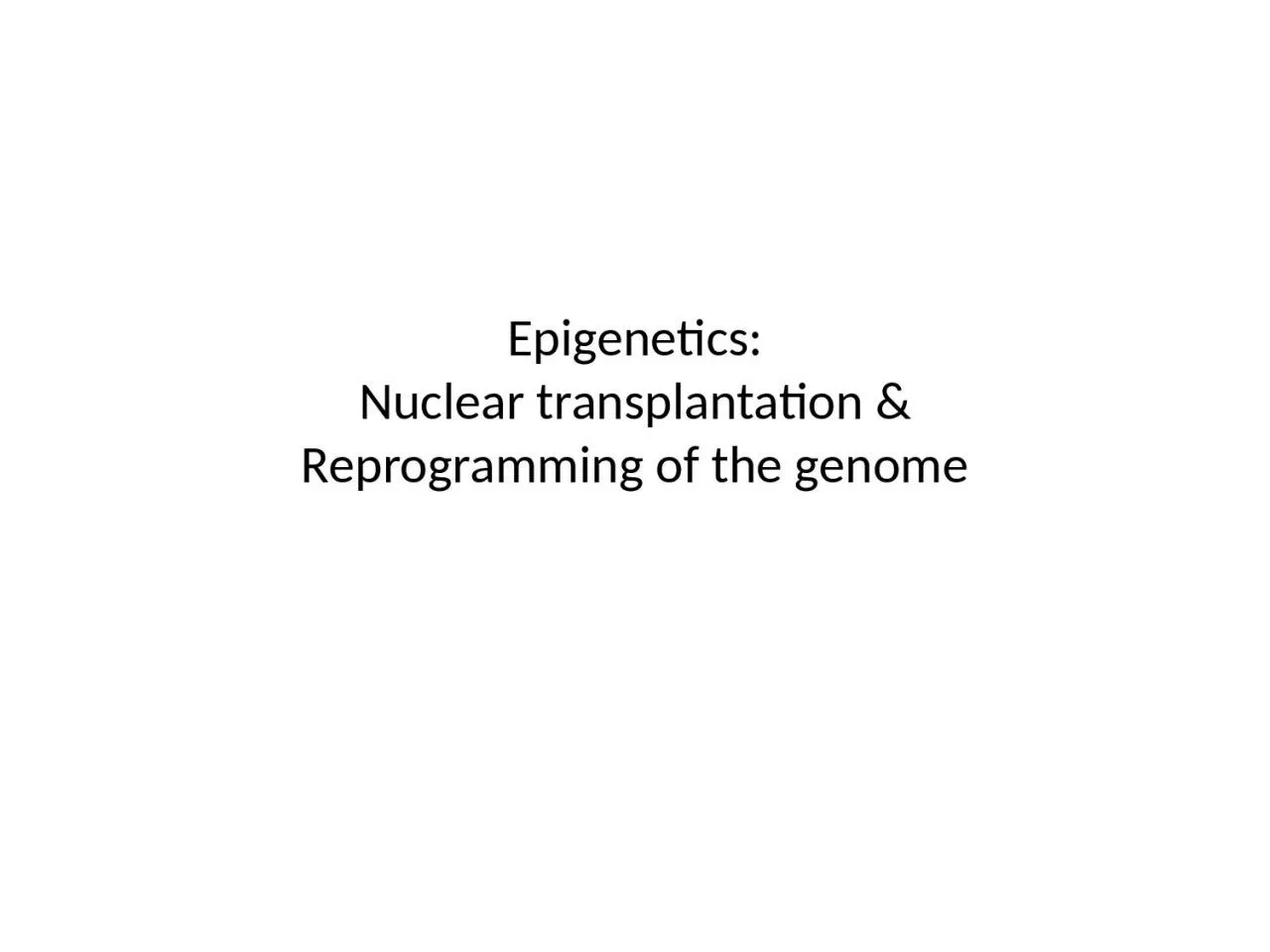

Reprogramming of the genome Historical perspectives Big question nuclear cloning is possible genome of differentiated cells is identical to that of undifferentiated cells New concept Reprogramming somatic to embryonic epigenetic state ID: 1043913
Download Presentation The PPT/PDF document "Epigenetics : Nuclear transplantation &a..." is the property of its rightful owner. Permission is granted to download and print the materials on this web site for personal, non-commercial use only, and to display it on your personal computer provided you do not modify the materials and that you retain all copyright notices contained in the materials. By downloading content from our website, you accept the terms of this agreement.
1. Epigenetics:Nuclear transplantation &Reprogramming of the genome
2. Historical perspectivesBig question: ‘nuclear cloning’ is possible? (genome of differentiated cells is identical to that of undifferentiated cells?)New concept: ‘Reprogramming’ (somatic to embryonic epigenetic state)Earlier studies with amphibian (frog eggs) Later studies with mammals (mouse eggs)
3. Nuclear transfer procedure (frog)
4. Nuclear transfer procedure (mouse)Earlier attempts: zygotes + nuclei fromcleavage stage donor embryosSome success in farm animals not inmouse : lambsTransition time difference: maternal tozygotic transcription‘Dolly’ cloning: mammary gland donor1st somatic cell nuclear transfer (SCNT)More than 15 mammalian species cloned
5. Phenotype of cloned animalsMore differentiated-stage cellsderive much less success!Frog nuclear transfers were successful up to tadpole stage!
6. Phenotype of cloned animalsThe majority fails after implantationG0 or G1 –phase donor cells are moresuccessful upto blastocyst than S-phaseES or EC cells.But more success rates in ES or EC beyond the blastocyst stage.Cloned animals (survivors) likely havesome defects that are responsible foradult-stage health problems.Large offspring syndrome(large fraction of placenta-specific genesare changed in terms of their expression levels)Gametogenesis reprogramming isimportant for placenta genes
7. Reprogramming of terminally differentiated cells (monoclonal mice)A little loss of genomic complement is not a problem for cloning!
8. Reprogramming of terminally differentiated cells (olfactory neuron)
9. Medical implications of nuclear transplantationReproductive cloningvsTherapeutic cloning
10. Medical implications of nuclear transplantation (demonstration)
11. iPS (Induced Pluripotent Stem) cellsthree factors (Oct4, Sox2, Klf4) can transform adult cells into stem cells.does not require early-stage embryos or cells from patients
12. iPS (Induced Pluripotent Stem) cells